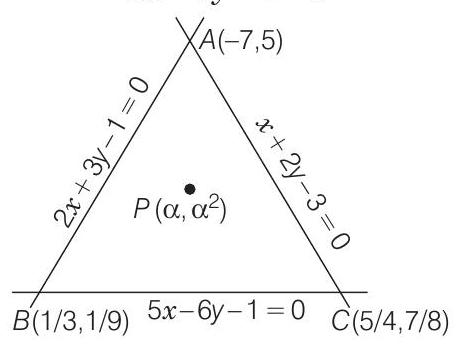Straight Line and Pair of Straight Lines 1 Question 56
56.
Determine all values of
(1992, 6M)
Show Answer
Answer:
Correct Answer: 56. (
Solution:
- Given lines are

On solving Eqs. (i), (ii) and (iii), we get the vertices of a triangle are
Let
Also, since
Therefore,
and lastly
Therefore,
On solving Eqs. (i), (ii) and (iii), we get the common answer is






